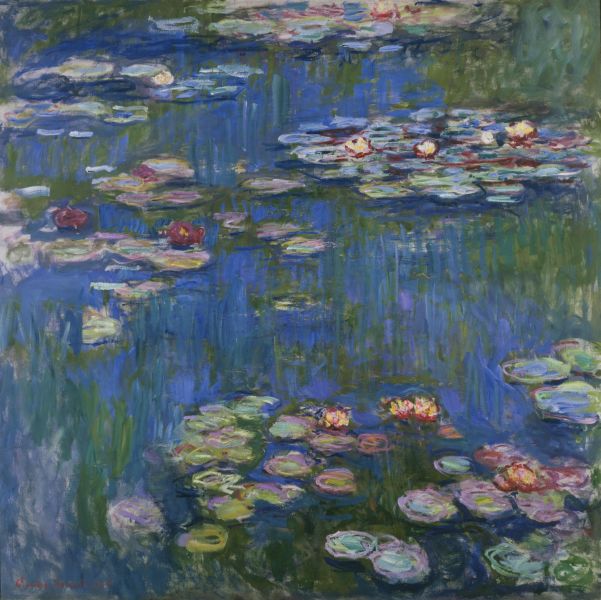 'Waterlilies' is the most popular series of Monet's paintings. Here the artist is not only using brush strokes in an Impressionist techniques; he also makes it rich in contemplative mood. The paintings can hence be said to be a long introspection of a drowned, reflected world, in which no sky is visible except by reflection; the water lilies fill the whole frame.
'Waterlilies' is the most popular series of Monet's paintings. Here the artist is not only using brush strokes in an Impressionist techniques; he also makes it rich in contemplative mood. The paintings can hence be said to be a long introspection of a drowned, reflected world, in which no sky is visible except by reflection; the water lilies fill the whole frame.
Monet's 'Water Lilies' are close to the ideas of his contemporary, the poet Stephane Mallarme, on poetry. In these paintings, emptiness matters as much as fullness, and reflections have the weight of things. Mallarme conceived of poetry as being structure of words 'and' absences:
"The intellectual armature of the poem conceals itself, is present - and acts - in the blank space which separates the stanzas and in the white of the paper: a pregnant silence, no less wonderful to compose than the verse itself." Mallarme further continues-
"To conjure up the negated object, with the help of alllusive and always indirect words, which constantly efface themselves in a complementary silence, involves an understanding which comes close to the act of creation."
Mallarme's "negated object", the symbolist sense of reality lurking behind its semantic veils is also the world as glimpsed in Monet's lily pond.



